The first time we tried Japanese food was in Los Angeles. A friend, who spent a year in Japan, took us to Little Tokyo in downtown LA. We went to a sushi restaurant with a conveyor belt with many little plates gliding around the dining area.
It was before the sushi buffets started popping up here and there. Knowing that we have never tried sushi before, our friend explained all the intricacies of making sushi and made some suggestions.
We loved sushi from the first bite and couldn’t get enough of these little morsels. We enjoyed the unusual condiments: the thick, biting green paste and the delicious slices of some marinated vegetables. If you did not guess yet, I am talking about wasabi and pickled ginger. It was more than thirty years ago.
Fast forward to our first trip to Japan. It is well known that this fascinating country is expensive. However, when our daughter got her first job after college (teaching English in Japan), our decision was made – we must go there.
What a trip it was! By the time we arrived in Japan, our girl was living there for about six months. She made many friends with the teachers at the school where she worked and with adult students who studied English with her in the evenings.
Thus, the Japanese treated us not like the other foreign tourists (in the polite, but in the indifferent way), but as special guests. We were invited to many houses for dinner parties. Also, in our honor, the local school board organized a fantastic dinner in the local restaurant.
At all these events, we had to use chopsticks. Despite being awkward with that “flatware” we got many compliments and encouragement from the smiling Japanese sitting around us.
Sushi

During that first trip, we went to the restaurant which served sushi from the conveyor belt. It was surprisingly inexpensive. This time we knew what sushi to choose.
Sashimi

Until that first trip to Japan, we never tried sashimi (fresh raw fish or seafood). It is served with soy sauce and wasabi but never with rice.
Tempura
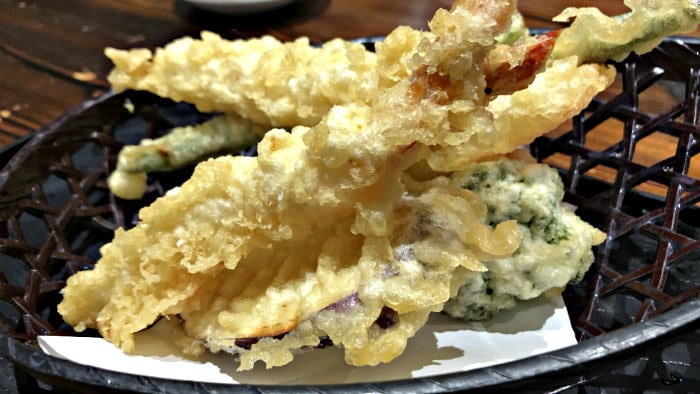
I have made several attempts to prepare tempura at home. It was OK, but never as good as tempura in Japanese restaurants. This tasty meal is made with pieces of seafood or vegetables delicately fried to golden color, never brown. The chef puts cooked pieces on paper towels to makes sure that his tempura is not greasy. It is served with special dipping sauce.
Shabu Shabu
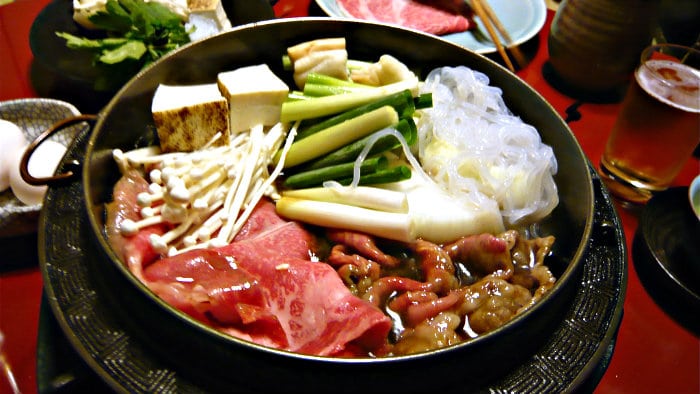
We were blown away by Shabu Shabu, this incredibly delicious Japanese hot pot. The waiter brings a large pot with hot savory broth, places it on the burner in the middle of the table, and turns the heat on. Then he covers the table with several small plates which have thin slices of meat, two or three kinds of mushrooms, and a variety of vegetables. The customers cook all these ingredients in the gently boiling broth.
The Japanese have different food for every season. Shabu is one of such dishes. How comforting it is to have this mouthwatering, hot meal in the middle of winter!
Miso soup
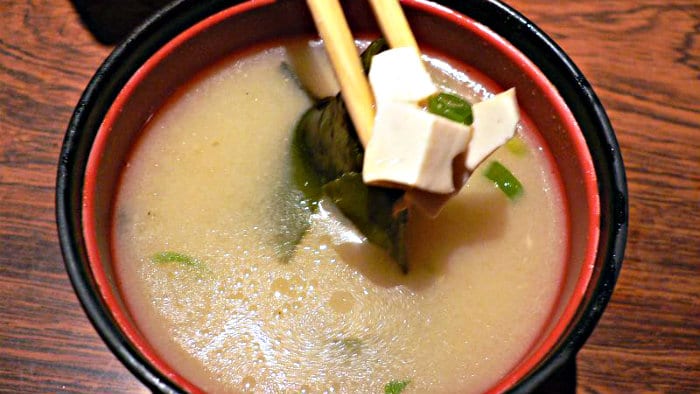
Miso soup is served year-round and any time of the day. In Japan, we had it for breakfast, lunch, or dinner. The toppings for this soup may include tofu, green onions, and seaweed.
Yakitori
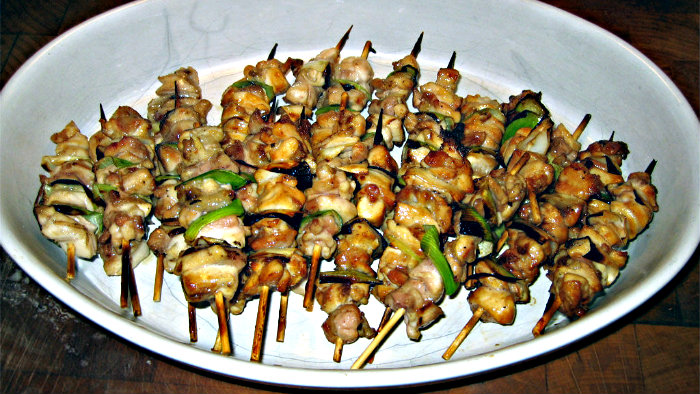
Yakitori is barbecued chicken. There are many small restaurants with closet-size kitchens called yakitori-ya, which specialize only in yakitori. They serve all parts of the chicken (even embryonic eggs, heart, gizzard, liver, and skin) on short skewers. We stuck only with the familiar chicken parts: leg, wing, heart.
The best drink for these tiny morsels of heaven is the icy-cold beer. You can finish several skewers without breaking a bank – yakitori is cheap in Japan.
Natto

Natto, this healthy “treat” is definitely not for everyone. It is a lump of fermented beans which are slimy and smell like moldy cheese. To hide the weird taste natto is served with soy sauce, ketchup, wasabi. Many people eat it for breakfast. I found natto strangely delicious, but both members of my family stepped out of the room while I was eating it.
Gyoza
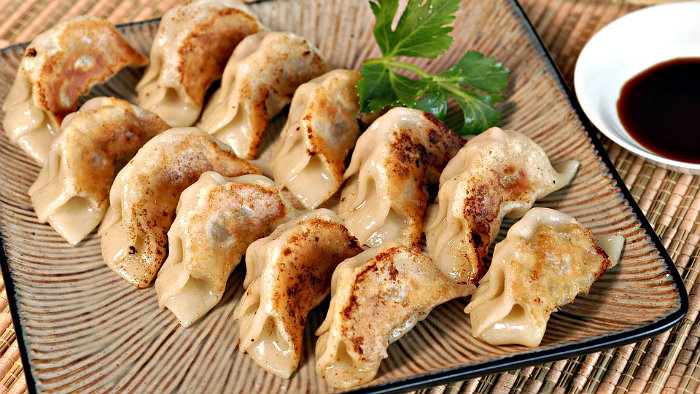
The gyoza was the real comfort food for us. Many countries have some kind of dumplings – Russia, Italy, China, Japan, Korea. These small pockets of dough with a variety of fillings are called by different names, but all are delicious.
The first time we tried gyoza was at the small hole-in-the-wall restaurant, and we were hooked. Also, you could buy gyoza at the convenience stores. While you are paying for the purchase, the cashier is heating up your gyoza in the microwave, gives you a tiny fork and a packet of dipping sauce made with soy sauce and rice vinegar. The filling can have pork, cabbage, green onions, mushrooms.
Takoyaki
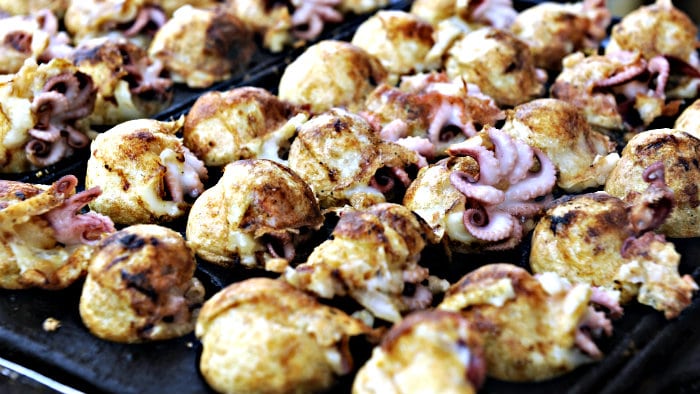
Walking on Dotonbori shopping street in Osaka, we were impressed by the cook who turned the small balls of something in the hot metal plate with half-spherical molds. He kept turning and turning these little balls with his chopsticks. He looked like a magician.
From time to time, he would put several of these spheres in a carton, topped them with mayonnaise and fish flakes. Despite his incredible speed, the line of customers did not shorten. More and more people lined up to buy his creations. We lined up as well. This food was called takoyaki, the round nuggets with pieces of octopus. Another delicious discovery!
Okonomiyaki
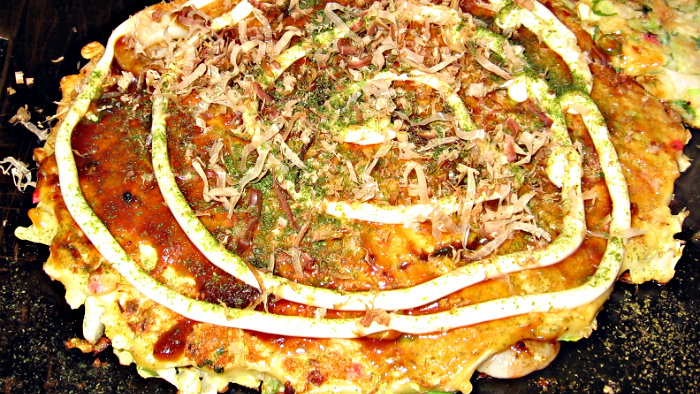
Our introduction to our favorite dish okonomiyaki happened in Hiroshima where the whole restaurant was dedicated to this dish. The customers sat at the communal table, which had a large hot griddle in the middle. The cook was making three or four okonomiyaki at once. He was frying a complex mixture of batter, thinly sliced cabbage, noodles, eggs, bacon.
As this mass started frying on one side, he expertly turned each large pancake without dropping a crumb. To make the pancakes thinner our cook pressed them with an unusually wide wooden spatula. In the end, he poured on the pancakes two kinds of sauces and sprinkled with fish flakes. The pancake, almost as big as the plate, was delicious. By the way, the word “okonomiyaki” means “grill as you like”.
From Hiroshima, we took a day trip to Miyajima Island. We read in the guidebook that one of the restaurants there let its customers cook okonomiyaki by themselves. Feeling that we are almost the experts in making this dish (we already ate okonomiyaki once, haven’t we?), we went to this particular restaurant for lunch.
The cook, who did not speak English, ignored our exuberant hand gestures which begged him to let us make okonomiyaki by ourselves. Maybe he just did not want to clean the hot grill after these two crazy gesturing gaijin (foreigners) made a huge mess. We hid our disappointment and enjoyed the lunch.
Before leaving Japan, I bought the wide spatula for making okonomiyaki. For many years, it is sitting in the drawer unused.
Japanese soups and noodles
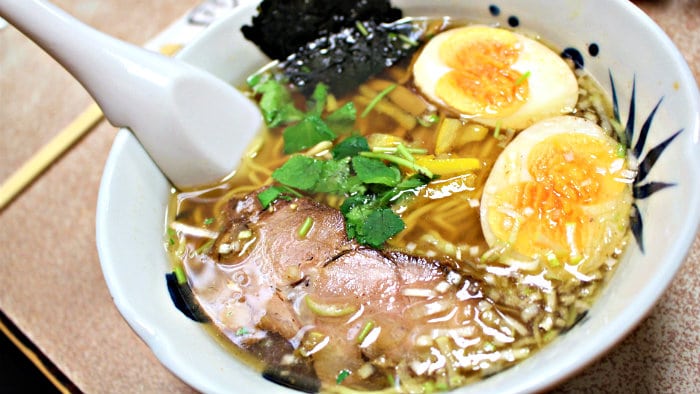
I love all kind of Asian noodles, doesn’t matter if they are made of wheat, rice, or buckwheat. The ramen noodle soup includes wheat noodles, broth, and several toppings such as meat, hard-boiled egg, vegetables. While in Japan, we went to several ramen restaurants. All of them were inexpensive, but their food was superb.
Udon is another kind of noodles in Japan. They are thick and chewy wheat noodles served in many creative ways. Again, we prefer them in soup.
Soba noodles are made with buckwheat flour. The first time we tried soba noodles was on a hot day in June, after a long bike ride in Kyoto. We stopped for lunch at a tiny restaurant. Many customers ate cold soba noodles on that sweltering day.
We liked how that dish looked: a pile of beige-colored noodles, sprinkled with green onion and seaweed, served on a bamboo mat placed on the top of black lacquer box. In the corner of the box, were two tiny saucers – one with wasabi and another with the dipping sauce. Soba can be served hot as well.
Green tea ice cream
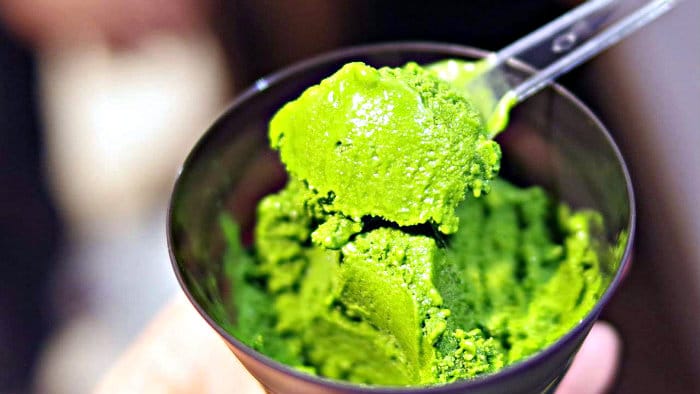
There no comparison between the green tea ice cream we had in Japan almost every day and the green tea ice cream served in the Chinese buffet restaurants back home. The flavor of this ice cream is intricate, and it is not too sweet.
Japanese tea ceremony
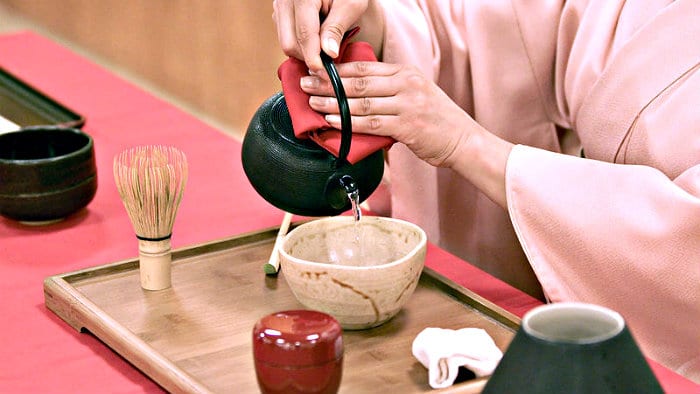
There are many kinds of green tea in Japan, but matcha tea is the one used for tea ceremonies. We were lucky to be treated to such an event in the modest apartment of our daughter’s adult student, Keiko.
Just five feet tall, she had a lot of energy and humor. It was amazing, how she managed to make the elaborate dinner with Shabu Shabu and to perform the tea ceremony in her incredibly small living quarters!
While preparing for the tea ceremony, she brought out a wooden box with cups, saucers, bowl, brush for mixing tea, cloth napkins. In hesitant English, she explained the whole procedure. The tea was surprisingly bitter, but the bitterness was offset by the sweets which are always served with matcha tea.
Book your flight to Japan
Best time to visit Japan
Best time to travel to Japan is from March to May, and from September to November.
